We're an affiliate
We hope you love the products we recommend! Just so you know, we may collect a share of sales or other compensation from the links on this page. Thank you if you use our links, we really appreciate it!
When most of us research off-grid power in a van or RV, the first question is “how many solar panels do I need to install?” But our vehicles can power our lives too, because they have a built in generator.
A vehicle’s alternator takes energy from the engine and uses it to charge the vehicle’s battery. A battery-to-battery charger prompts the alternator to generate more energy. That energy is then passed into our house batteries.
The alternator used to be called a generator, and it works in the same way. The mechanics are similar to energy generated by water falling over a hydroelectric dam and spinning wheels along the way. The engine cranks a wheel on the alternator and generates energy.
There are two types of devices we’re looking at: isolators and DC to DC aka Battery to Battery chargers.
Do You Need Alternator Power?
How do you live your life on the road? The benefit of alternator charging is directly proportional to the time spent driving.
- There’s some newer products that make this whole thing a lot easier. Combination charge controller & alternator chargers (like the Renogy one we recommend here) are now available. If you’re designing a new electrical system, we definitely recommend charging from the alternator. You’re going to have a charge controller anyways, and the combo devices are only a bit more expensive. We like Renogy’s DCC50S for this.
- Alternator charging can increase the lifespan of your battery. Simply, for battery health you want to charge your battery to 100%. If you solar panels can’t keep up with your demand, the alternator can make up the slack.
- Depending on your usage, you might actually be able to skip solar panels altogether. If you drive a lot and don’t consume a lot of electricity. A budget setup for off-grid electricity could be just a battery to battery charger and a 12V battery.
You will also need to consider all the potential issues with the three main charging options:
- Alternator:The vehicle needs to be running for quite a while to get a meaningful charge from the alternator. A 15-minute drive isn’t going to be much energy. Compared to solar panels, it’s pretty limited. Solar panels are trying to generate energy all day, while the alternator only works when the engine is on.
- Solar: Cloudy days will happen. Depending where you are for the winter, they might happen a lot.
- Shore Power: Plug in to an outlet to charge your batteries! No sun or driving necessary. But you do need to be near an outlet (no boondocking).
How to Select the Size of Amps for DC to DC Charger
Next, you need to choose what size (how many amps) charger you are shopping for. We will do some simple math before deciding on the correct charger for each system.
The charger size depends on the capabilities of the battery bank. (If you have more than one battery, use the combined Amp-hours for this comparison). Here’s the rule of thumb:
- AGM: Charger Amp rating = Battery Ah capacity * 20%
- Lithium: Charger Amp rating = Battery Ah capacity * 50%
- So, a 100Ah AGM can use a Charger up to 20A
- 100Ah Lithium can use a Charger up to 50A
We recommend checking the specification sheet for your batteries. Here’s a screen shot from RELiON’s 100Ah battery specifications:
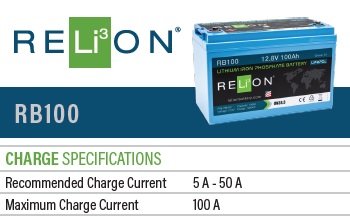
This battery is recommended to be used with up to a 50A charger. And if we had two of these batteries in parallel, we could use a charger up to 100A.
Still deciding on a battery? We compared AGM vs. Lithium and chose our favorites.
Best DC to DC/Battery to Battery Charger and Isolator for Van and RV
Now that you calculated the amp rating of charger for you (you did that, right?), here are our favorites:
For the best value DC to DC charger for any type of battery:
Renogy DC to DC Battery Charger
Best pricing available on a reliable charger from reputable company. Available in 20A, 40A, and 60A sizingRenogy is known for their good, reasonably priced products
DC to DC chargers work with Lead-Acid and Lithium batteries. Unlike isolators, they will keep your alternator safe and maximize your battery’s lifespan
Wire required from charger to vehicle’s ignition circuit
or (get 10% off with our link and promo code)We recommend DC to DC chargers over isolators because they protect the vehicle’s alternator, and maximize the battery’s lifespan. DC to DC chargers provide a multi-stage charge to the house battery and push more charge current than an isolator.
Renogy’s DC to DC charger packs all the same capabilities as any other manufacturer’s, at a lower price point. One note is that you will need to run a wire from the charger to your vehicle’s ignition circuit. This wire is included with the charger. For a Transit, this is no big deal as the ignition circuit connection is right next to the vehicle battery.
Renogy sells 20A, 40A, and 60A chargers. For a lithium battery, you can use any of them. For an AGM battery, your max charger size is 20% of your battery’s Ah. For example, 100Ah AGM battery should use the 20A charger.
For 10% off this and any other Renogy item, visit them using our link and promo code. Find item “DCC1212”
If you’re designing a new system and need a DC to DC charger AND solar charge controller:
Renogy DCC50S DC-to-DC Charger and MPPT Solar Charge Controller
Simplifies and saves money on electrical system by combining components into oneQuality MPPT charge controller
DC to DC chargers work with Lead-Acid and Lithium batteries.
50A charger great for most system, unless you have less than 250Ah of AGM batteries
or (get 10% off with our link and promo code)We’re excited by the new DCC50S Charge Controller MPPT from Renogy. This thing wasn’t out yet when we designed our electrical system in 2018. What’s cool is it’s a combo Solar Charge Controller and DC to DC Vehicle Alternator Charger.
Traditionally the charge controller and B2B charger were two separate pieces of equipment. If designing our system today, we’d definitely buy the Renogy DCC50S. It will even trickle charge your vehicle battery once it senses your house (solar) battery is full.
The solar and alternator capabilities of the DCC50S have standard specs that match those from any stand-alone equipment. It can function with up to 660W of solar panels (that’s a lot!), and any vehicle alternator.
There has been some confusion on the specs, so we confirmed with Renogy. It has 50A total current capacity. This is not mutually exclusive – for example, if there is no solar coming in, then it can pass up to 50A from the alternator. Vice versa if you aren’t driving and there is lots of sun, 50A can come in from the solar. This is a good design because the device switches its 50A capacity between whatever charging source is working for you at the moment.
The only functionality it’s missing is an LCD screen or Bluetooth to display charging levels. Fortunately, most of these stats are displayed on the battery monitor you’ll want to be getting to monitor your battery levels and health.
For 10% off this and any other Renogy item, visit them using our link and promo code. Find item “DCC50S”
Tight budget? You can charge with an isolator if willing to take the risks:
Blue Sea Isolator
Cheaper than DC to DC chargers. Easy install.For this willing to accept the downsides, this isolator works as intended
Won’t provide as much current as DC to DC charger
May reduce lifespan of lead-acid batteries. Inefficient with lithium batteries.
Isolators were the tried and true alternator charging method for many years. But with the advent of “smart” alternators, they are a lot less effective. We’ve got a comparison isolator vs. DC to DC charger farther down in this article.
This isolator will not work with a lithium battery. For a lithium battery, you’d need Battleborn’s specialized isolator. But at that specialized price, you might as well get a DC to DC charger.
To summarize, we would only recommend isolators in this situation: older vehicle with AGM/lead acid battery, and willing to reduce your battery’s lifespan.
The Other Alternator Chargers:
Sterling Power BB1230 Battery to Battery Charger – Sterling makes another reliable DC to DC/B2B charger. Simple reason we haven’t recommended this one – it’s no better than Renogy’s option, but it’s more expensive. The unit is also pretty loud.
Victron Orion 12/12/18 DC to DC Charger – Victron is another off-grid juggernaut brand. We would certainly trust this product, but see no reason to select it over the Renogy option. It offers no features that Renogy doesn’t offer.
Battleborn Lithium Isolation Manager – For a lithium battery, you need a specialized isolator. But at that specialized price, you might as well get a DC to DC charger.
Charging with Isolator vs. Battery-to-Battery/DC-to-DC
There are two types of devices you can use to charge from the alternator.
Isolator
The vehicle and house battery are combined into one, but your house battery is “isolated” from the vehicle battery. A “smart VSR isolator” ensures you don’t drain your vehicle battery. The isolator diverts energy to your house battery only when the vehicle battery is at an adequate voltage.
Isolators are simple devices and don’t function well with newer vehicles with “smart alternators.” Most newer vehicles have implemented smart alternator technology because they improve gas mileage. In short, smart alternators only do as much as necessary to charge the vehicle’s battery, and no more. Further reading here.
Smart alternators produce minimal extra energy. For that reason isolators have minimal extra current they can pass to our house battery. So for Transits, Promasters, and newer Sprinters, isolators won’t charge the house batteries as much as a DC to DC charger. Here’s the other thing: smart alternators sometimes push huge current through the isolator. In those cases, we’d be charging the battery at a rate that exceeds the battery’s acceptable charging rate.
For AGM batteries: Isolators do not provide a full multi-stage charge to your house battery. This can reduce the battery’s life because a full charge is necessary. On the flip side, if you are getting solar and/or shore power as well, those sources that make up the slack and charge it to 100%.
For Lithium batteries: A standard isolator will work, but is inefficient. You can buy a Lithium specific isolator. Unfortunately it’s barely cheaper than the B2B options so you should just get one of those.
Battery-to-Battery/DC-to-DC Charger
DC-to-DC chargers (aka “Battery to battery” chargers) do more than just pass through current. B2B chargers boost the current and buffer the cycling of smart alternators. B2B chargers are “set it and forget it.” Once installed, it will automatically switch on and off based on your vehicle and house battery voltage.
The current limiter in B2B chargers prevents overworking alternators.
They also deliver a multi-stage charge to house batteries, which maximizes the battery’s lifespan.
So what do we do, isolator or DC to DC/B2B charger?
For us the choice is easy, DC to DC/B2B charger for 90% of electrical systems. We would only recommend isolators in this situation: older vehicle with AGM/lead acid battery, and really want to get the cheapest option at the potential expense of battery lifespan.
How to Wire a DC to DC/Battery to Battery Charger
The wiring of a standard B2B charger is pretty simple. Take a look at this image from Renogy. Essentially, positive and negative to vehicle battery, and positive and negative to house battery.
Be sure to add fuses or circuit breakers near both batteries. These should be sized about 20% greater than the current. For example, with Renogy’s 60A charger you should get a 70A breaker.
We recommend circuit breakers so you can always turn the current flow on or off. Additionally, if there is an electrical short you would not have to replace the fuse, you just flip the circuit breaker back on.
Renogy’s B2B chargers and also require a wire to the ignition. For the Ford Transit, the ignition circuit is located near the battery under the driver’s seat:
Wiring Renogy’s DCC50S charger is a little different because it is a combo charge controller and charger.
Ready for more info?
Visit the Van Conversion Build GuideWe sincerely hope this information is helpful on your build journey!
This post contains affiliate links that may earn us a commission if a product is purchased. But, we always strive for the reuse and repurpose of materials – so we encourage searching for a local used option before buying from our links.

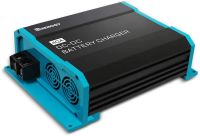
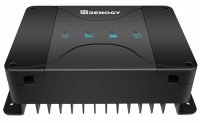
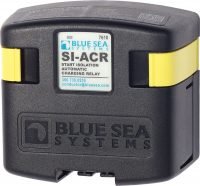
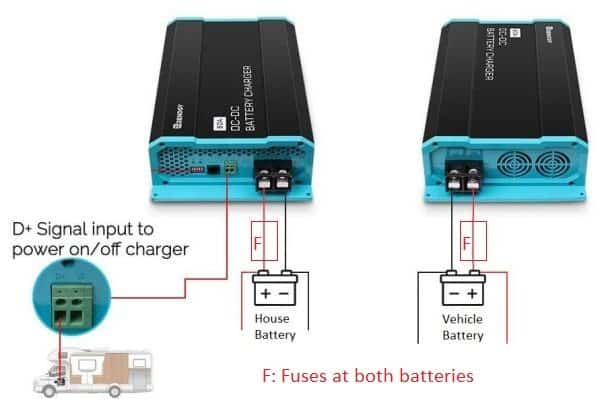
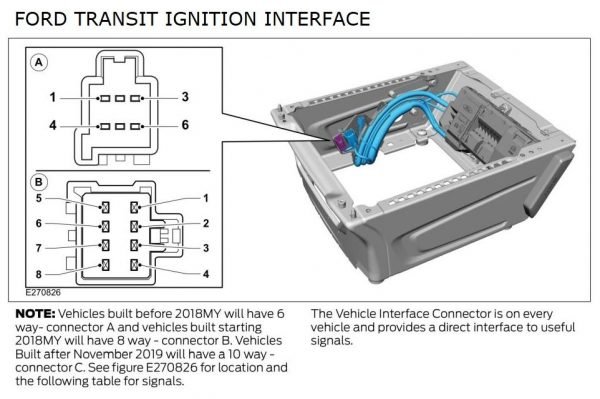
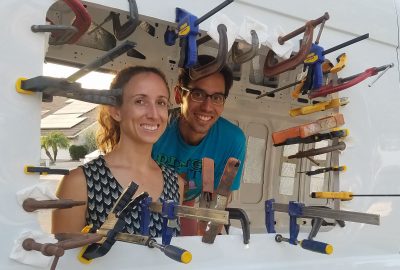


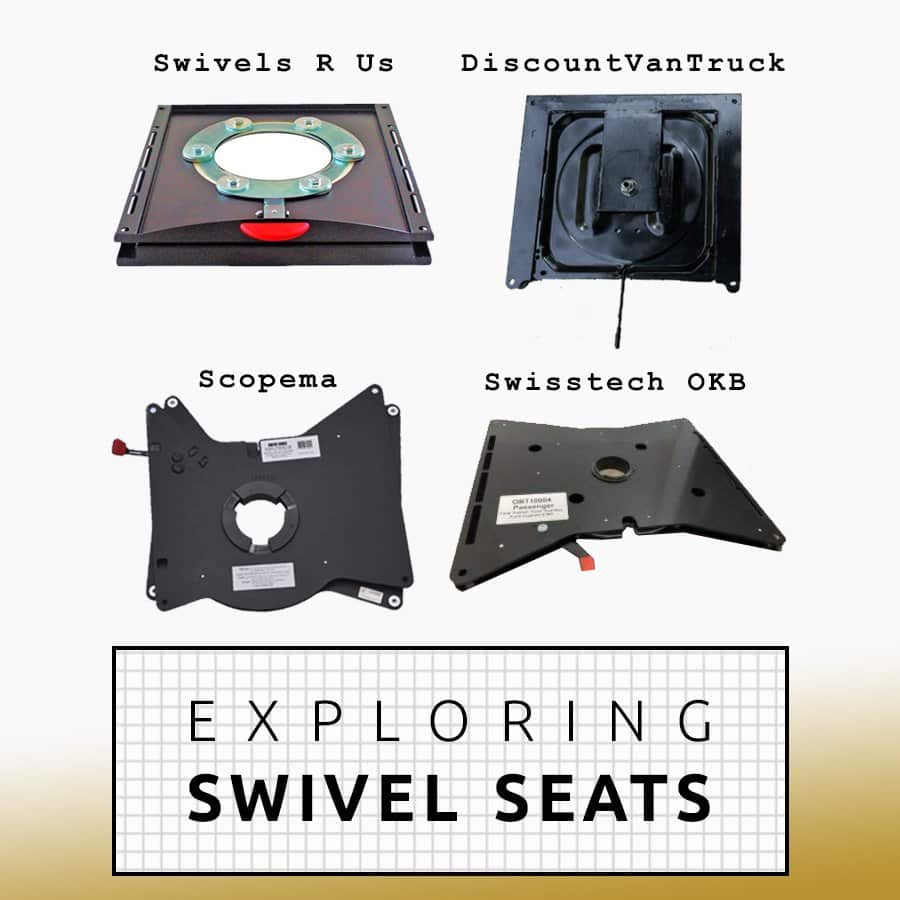
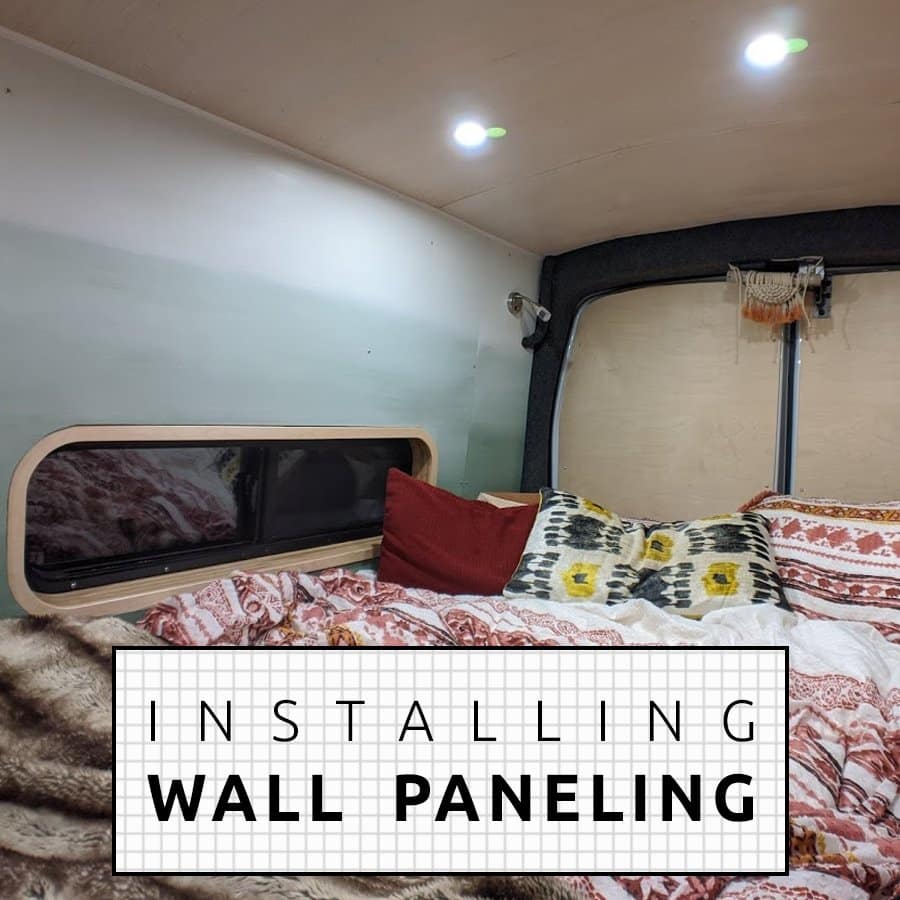
Thanks for all the info!!
Thanks for the info. So did you hook your DC to DC directly up to your van’s starter battery? Is this something where every time you start your van, you are charging your batteries or do you have a switch to control when to use your DC to DC? I’m looking to install my Renogy DC to DC and am stumped on setting this up without draining my whole van’s battery.
Yep, you connect directly to the van’s battery. Whenever the van is running, the DC to DC charger will draw from your van battery and charge your house battery
Thanks for the info on the Renogy DCC50S! Did you ever put up your wiring plans you described in the video?
Hey Justin, that’s actually not our video, its just a helpful one that we found and wanted to share.
This is maybe a stupid question but I’m learning and was wondering what the difference is between a 12-12 20A and 12-12 40A? Does it mean it will charge 20 and 40 amps per hour while driving? And what if I have 2 125Ah agm battery *20% = it can use 50A but I only put a 12-12 20A in is this bad?
A 20A charger will draw 20A from the vehicle battery and charge your house battery with 20 amps per hour while driving. Same with 40A.
For your specific example, it is totally fine to have a 20A b2b charger if your house battery can be charged up to 50A. It just means the house battery while be charging slower than its capacity. The risk you want to avoid is your b2b charger at a higher rate than your house battery. For example don’t get an 80A b2b charger if your house batteries can only handle 50A charging.
> A 20A charger will draw 20A from the vehicle battery and charge your house battery with 20 amps per hour while driving.
DC-DC are boosting chargers and are very likely pulling >20A from the chassis in order to charge the aux battery at 20A.
Example: Charging 20A @ 14.4v from a 14.0v chassis voltage would, in a perfect world, pull 20.57A from the chassis. ~5% DC-DC losses means actual draw is closer to 21.6A. Now consider a “smart” alternator running at 12.5v; this would pull 24.19A after losses. Not a huge deal, but I didn’t want people to think 20A out means 20A in from the chassis.
Where does the power from the Alternator go after the batteries are fully charged? Has it a dump load or is it just disconnected via a limiter or relay? Does it remain open circuit?
Thanks Malcolm
Hi Malcolm – that question is a little above our pay grade. What we know is that when batteries are fully charged, nothing happens with the excess power from the alternator. Where that power is going, or the mechanism for “doing nothing” with the power, we honestly couldn’t say!
Newer vehicles have “smart” alternator systems, in which the power delivered by the alternator is controlled by the vehicle ECU depending on multiple factors. Older vehicles use a voltage regulator to control the output of the alternator. Either way, once the battery is fully charged, the alternator will only be producing enough power to keep it there (while continuing to power the vehicle’s systems, of course.) Thus, there isn’t any “excess power” that has to be dumped/absorbed.
Simply stated, the output of the alternator is reduced as needed by controlling the power to the electromagnets inside. So the weaker the magnets the lower the output. The power to the magnets is adjusted ( or even turned off and on completely) by a “voltage regulator”. On some machines this is a component outside the alternator on others it is inside or a function of a small processor.
Hi there, I am going to be using 4x 130ah
lead avoid batteries and was wondering if I could use a 40a b2b charger or would it have to be bigger?
> Where does the power from the Alternator go after the batteries are fully charged?
Alternators adjust current in order to hold a given voltage target. When the alternator (its regulator, really) sees voltage is at the target it backs off current. The alternator works less hard, in effect.
> was wondering if I could use a 40a b2b charger or would it have to be bigger?
Flooded batts typically want a minimum of 0.10C, In this case 010C is 52A (.10 x 520Ah). If you also have solar installed I’d think 40A would be sufficient. If you are charging by alternator only (a little dicey with lead chemistries) a 50-60A would be better.
If you have solar AND a high output alternator (say ≥200A) an isolator would do the heavy lifting for much less money than a 50A DC-DC. 520Ah of deeply-cycled flooded would pull ~100A (0.2C) at for a few minutes until they came up to alternator voltage, at which point their acceptance would drop fairly linearly. Solar could take it all the way to Absorption voltage then maintain Float voltatge.
Great information. I have a 60amp alternator on my boat. What is the max size dc to dc charger that I should use. I’m thinking 30amps and the Renogy dc to dc with mppt but not sure if it should be less or more. I don’t want to stress the alternator when at sea😳. Thank you!
Hey Wendy, I’d recommend double checking the manufacturer instructions for the alternator to make sure you don’t draw too much. You’ll also need to take into account your battery bank. The charger size depends on the capabilities of the battery bank. (If you have more than one battery, use the combined Amp-hours for this comparison). Here’s the rule of thumb:
AGM: Charger Amp rating = Battery Ah capacity * 20%
Lithium: Charger Amp rating = Battery Ah capacity * 50%
So, a 100Ah AGM can use a Charger up to 20A
100Ah Lithium can use a Charger up to 50A
This article got my attention…..I’m presently trying to decide between a Renology 60 amp dc-dc charger and a Victron Argo Fet isolator. My setup is a Ford f450 with a camper. 390 amp alternator in the truck and 2x group 27 Lifeline Agm, 100ah each in the camper. I also have 400 watts of solar panels. We like dry camping, often with tree cover which limits solar. I’d like to be able to charge quickly with the truck in multi-day stays. The marine electrician I use for my boat is pushing me toward to Victron because the charge rate is higher, which is what I’m looking for. What say you? PS… I really hate running the Honda portable gen.
Thanks for the write up. Where did you end up connecting the D+ line on the Renogy charger that’s supposed to go to an ignition circuit. We have a 2017 Ford Transit too and found it hard to get under the driver’s seat for the ignition pin. Was wondering if it’s OK just to connect it to any 12V+ and add a switch for charging?
What size b2b should we choose? We have 100Ah lithium and plan to double it.
Thanks for a great article! A couple things to be aware of regarding the Renogy’s DCC50S 50 amp charger:
1) Although it’s specified to be a 50 amp charger, there are times when you’ll only get half this much current. For example, if the solar panel is providing any power at all say, let’s say 1 amp, then the alternator charger is scaled back to 25 amps and you’ll only get 26 amps of charging current. So you might want to disconnect the solar panels if you’re starting the engine to use the alternator for a quick charge up and you want a full 50 amps.
2) The maximum solar input voltage is 25 volts, so you’ll need to stick to parallel connections on the solar panels.
3) The MPPT solar charger will push as much as 25 amps back into the starter battery if the service battery is full. Although this is nice to keep the starter battery charged, I’m not sure the van manufacture will endorse an external charger interfering with the factory setup.
Class A Workhorse Chassis motorhome. We are not sure from WHERE to connect the positive input to the charger. We thought we could use the existing cable that currently runs from the battery management system (I think that’s what it’s called – box of wires and fuses and stuff in the engine compartment), connect that to a breaker, then run a 6awg wire from the breaker into the charger. It will charge the battery that way but then as soon as we cut the motor the Victron Orion loses power, blue tooth cuts out and there is no power getting from the battery to the house. Any advice on what we did wrong? Do we need to disconnect something in that box? Do we need to run a separate cable from the chassis battery to the charger? If so, what do we do about the shore power connection that currently goes through the above mentioned box brainy thing?
Michelle – I’m sorry but I’m not familiar enough with the components in your vehicle to let you know a recommendation. Sorry, but good luck!
Hi thank you for the super helpful information!
I’m starting off with just a 100AH AGM battery. Based on your recommendations I should only need a 20A b2b charger. However, I know that eventually I’ll want to add another 100AH battery along with some solar. So I’m thinking that I should probably get a 40A b2b charger. But will that be too much for when I’m starting off with only 100AH battery capacity? Also my alternator only has a max output for 105A.
Thoughts on if I should get the 20A or 40A b2b charger?
Thanks!
Hi Rochelle – with a 100 Ah AGM battery, the largest b2b charger you can get now is 20A.
Hi thanks for the article. I have recently purchased the Renogy dc to DC/ MPPT charge controller combined along with the BT2 module. My question is would i still need to buy a battery monitor or does the DCDC with bluetooth already give me all that information?
Yes you will also want to get a battery monitor such as Renogy’s one https://www.amazon.com/dp/B07RP5B5P7/?tag=vanconvertscom-20 The charge controller will only tell you the battery’s voltage, which is not an accurate indicator of the battery’s state of charge.
My alternator puts out 170 amps at 2250 RPM. Will a Victron DC-DC 12/12/30 charger work OK? Can that size alternator handle sending 30 amps to my camper battery? My camper battery is a 100Ah Lithium Ion.
wondering if anyone can help provide some insight, i’m installing a renogy dc to dc mppt charger, two 100 watt solar panels, 100 aHr Lithium house battery, flooded lead acid start battery, on to my boat. So my question is: can my shore powered ac to dc charger for my lead acid battery be connected with the alternator to the alternator input on the dc to dc charger? will the dc to dc charger use the input to optimally charge the lithium batter using its charge profile, as it would be the same as getting input while boat engine is running and supplying power from the alternator. shore power ac to dc charger would not be supplying input while engine is running and boat underway. Boat is in the water docked and usually plugged into shore power, as it is located in the pacific northwest we have lots of sun for solar power in the summer months but not enough during the rest of the year for the solar panels to effectively keep the 100AHr lithium battery charged year round, short of starting and running engine for alternator power input. Just FYI, the ac to dc charger has is a two bank charger and one set of leads would be connected to charge lead acid battery with lead acid charging profile, would use second bank leads to connect to dc to dc charger alternator input.
Ryan, I think the answer is basically yes I was thinking the same because even the latest NOCO AC-DC charger puts out 14.0v for lithium, still not the 14.6 my LiPo needs. The only two gotchas I see are:
1) This unit claims to also have the solar trickle charge the starting battery as well and we wouldn’t want it doing that at the same time our AC charger is charging.
2) It does need a D+ lead to indicate if the engine is on to power the Renogy itself as well as to indicate the motor being on so it doesn’t have the starter battery get killed charging your house battery when the vehicle is not on.
My current plan is to put an A/B battery switch between a 20A AC-DC power supply and the alternator leads to manually switch between the two and splice the power supply output with the D+ lead so when it is on it will also supply the D+ so the charger thinks the engine is running and allow it to charge my LiPo.
The manual switch may not be necessary, might be good enough to simply use the power switch on the AC-DC supply since I would only ever turn it on when the engine isn’t running, but I might forget and turn on the engine anyways to listen to the stereo anyways. I think this scenario is still ok, although it might exceed the amperage input limits and shutoff the DC input anyways…
The manual clearly says: “The DC-DC will not power on or operate until the D+ ignition cable is connected to the ignition circuit where it will detect a 12V source to operate ON. The purpose is to toggle the DC-DC switch on when the vehicle is running with the alternator to prevent the DC-DC from operating incorrectly with just the starter battery leaving you with a drained starter battery.” This implies that the unit won’t even power on with just solar panels? That has to be wrong…
The Cyrix-Li-ct from Victron are made to charge lithium from acid batteries and they are very affordable
I have 2×50 watt solar panels connected to a Renogy Wanderer 30Watt lithium ion compatible charge controller. I also have a DC to DC 20 Watt Atem Power Solar as well as alternator power inputs to keep the house batteries charged. I have BMS controls and or safety mechanisms in each battery, I have one 16 Ah Lipo, connected to 2 8Ah and Ah and one 12Ah(I individually charged all the batteries first of course before installation to 13.2 V). My question is, I’m wondering if I could split the solar input to both charge controllers. One would be Feeding my AGM battery on my motorcycle 16Ah, the other would be charging and or maintaining my House battery bank. The only reason to that I’m considering doing this is that the Atem Power dc to dc mainly focuses on the house battery and or batteries. I know it’s supposed to kick back to the main battery but I find my main battery around 12.2 continually. Anybody have any ideas? Be greatly appreciated! Thank you and God bless!
Quick question. I run solar via a Renogy Rover 20A mppt controller.
I bought a Victron Orion-tr 12v DC-DC “converter” with the intention to use it as an auxiliary source to charge my house battery.
I hadnt realised they made converters and chargers separately :/
I believe the converter will simply push out a flat stable voltage at 9 amps.
Can I hook this direct to my house battery ? at say 14V output and it will function as a charger ?
Would connecting it to the charge controller in parallel to the solar panel be an option ? (I expect it would damage either panel or controller)
Im concerned that being what it is, its not designed for batt2batt charging.
Many thanks for any advice
Great article, Thanks for the Detailed Analysis and step-by-step instructions.
I have already a MPPT solar charger (vitronics), now I’m wondering if I can simply add in parallel a DC DC charger for additional charge from vehicle battery?
I’m worried that I would damage the solar charger when charging with the DC DC charger. Same worry for damage the DC DC charger when charging from solar.
Anybody have some thoughts about this?
Thank You for the attention to detail, most thoughtful. Thank You !!
I just bought a Sprinter and the OP had an auxiliary battery installed and they ran it parallel with the starter battery. I want to install a Dc-Dc charger but the aux battery only has a 70aH and it’s lead acid and by my calculation I should get a 14A but don’t see that as an option. Which would be sage to get?
I’ve got the same question. Did you ever find the answer
B2B charges in both directions, correct? Altenator 2 house- House- altenator when plugged in.
Great article! Thanks for the info, I was confused about needing an isolator or not.
Question for you. I have a 2018 Transit and need to hook up that wire from my B2B to the ignition circuit. Can you explain how that is done and does the replace running the circuit to the alternator itself? I am using a renogy brand.
I have a 40 a dc dc charger and a 20 a ppt controller , is it ok for the controller to get 40 a from the dc dc ?